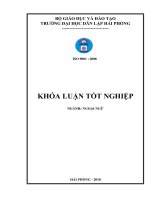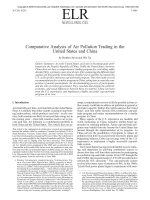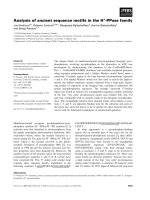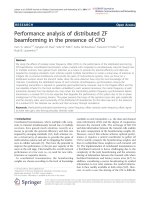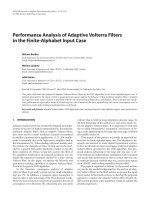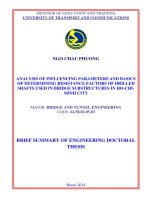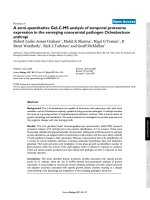Luận văn analysis of colloquial language used in conversation in the textbook streamline english departures
Bạn đang xem bản rút gọn của tài liệu. Xem và tải ngay bản đầy đủ của tài liệu tại đây (734.72 KB, 60 trang )
BỘ GIÁO DỤC VÀ ĐÀO TẠO
TRƯỜNG ĐẠI HỌC DÂN LẬP HẢI PHÒNG
-------------------------------
Mang l■i tr■ nghi■m m■i m■ cho ng■■i dùng, công ngh■ hi■n th■ hi■n ■■i, b■n online không khác gì so v■i b■n g■c. B■n có th■ phóng to, thu nh■ tùy ý.
ISO 9001 : 2008
KHÓA LUẬN TỐT NGHIỆP
NGÀNH: NGOẠI NGỮ
HẢI PHỊNG - 2010
Mangh■n
Ln
123doc
Th■a
Xu■t
Sau
Nhi■u
khi
h■■ng
phát
thu■n
l■i
event
cam
s■
nh■n
m■t
tr■
t■
h■u
k■t
s■
thú
nghi■m
t■i
ýxác
n■m
t■■ng
m■t
d■ng
v■,
là
s■
nh■n
website
ra
mang
event
kho
m■i
■■i,
1.
t■o
t■
th■
m■
l■i
c■ng
ki■m
■■ng
d■n
123doc
CH■P
vi■n
nh■ng
cho
■■u
■■ng
ti■n
h■
kh■ng
ng■■i
NH■N
■ã
quy■n
th■ng
thi■t
chia
t■ng
ki■m
dùng,
l■
CÁC
s■
th■c.
s■
l■i
b■■c
v■i
ti■n
vàchuy■n
■I■U
t■t
cơng
h■n
mua
123doc
online
kh■ng
nh■t
2.000.000
ngh■
bán
KHO■N
sang
b■ng
ln
cho
tài
■■nh
hi■n
ng■■i
li■u
ph■n
ln
tài
TH■A
tài
v■
th■
li■u
hàng
t■o
li■u
thơng
dùng.
tríhi■n
THU■N
hi■u
c■
c■a
■■u
■ tin
t■t
h■i
Khi
■■i,
qu■
mình
Vi■t
xác
c■
khách
gia
b■n
nh■t,
minh
trong
l■nh
Nam.
t■ng
Chào
online
hàng
uy
tài
v■c:
l■nh
thu
Tác
m■ng
tín
kho■n
tr■
nh■p
khơng
tài
phong
v■c
cao
thành
b■n
chính
nh■t.
tài
online
khác
chun
■■n
li■u
thành
tínb■n
Mong
gì
cho
d■ng,
và
v■i
so
nghi■p,
viên
kinh
■ã
t■t
123doc.
123doc.net!
v■i
mu■n
cơng
■■ng
c■a
c■
doanh
b■n
các
hồn
mang
ngh■
123doc
ký
g■c.
online.
thành
v■i
h■o,
Chúng
l■i
thơng
B■n
và
123doc.netLink
cho
viên
Tính
■■
n■p
có
tơi
tin,
c■ng
c■a
cao
th■
■■n
cung
ti■n
ngo■i
tính
website.
phóng
■■ng
th■i
vào
c■p
ng■,...Khách
trách
xác
tài
■i■m
D■ch
xã
to,kho■n
th■c
nhi■m
h■i
thutháng
V■
nh■
m■t
s■
c■a
(nh■
■■i
hàng
■■■c
tùy
ngu■n
5/2014;
123doc,
v■i
■■■c
ý.
cóg■i
t■ng
th■
tài
123doc
v■
mơ
ngun
b■n
d■
ng■■i
■■a
t■
dàng
s■
v■■t
d■■i
tri
dùng.
■■■c
ch■
tra
th■c
m■c
■ây)
c■u
M■c
h■■ng
q
100.000
cho
tài
b■n
tiêu
báu,
li■u
b■n,
nh■ng
■ã
hàng
phong
m■t
l■■t
tùy
■■ng
■■u
quy■n
cách
truy
thu■c
phú,
ky,
c■a
c■p
chính
■a
l■i
b■n
vào
123doc.net
m■i
d■ng,
sau
xác,
các
vuingày,
n■p
lịng
“■i■u
nhanh
giàu
ti■n
s■
■■ng
tr■
giá
Kho■n
chóng.
h■u
trên
thành
tr■
nh■p
2.000.000
website
■■ng
Th■a
th■
vi■n
th■i
Thu■n
c■a
thành
mong
tài v■
li■u
mình
viên
mu■n
S■
online
và
■■ng
D■ng
click
t■o
l■n
ký,
D■ch
■i■u
vào
nh■t
l■t
link
ki■n
V■”
vào
Vi■t
123doc
top
sau
cho
Nam,
200
■ây
cho
■ã
cung
các
các
(sau
g■iwebsite
c■p
users
■âynh■ng
■■■c
cóph■
thêm
tài
bi■n
g■i
thu
li■u
t■t
nh■t
nh■p.
■■c
T■it■i
khơng
t■ng
Chính
Vi■tth■i
th■
Nam,
vì v■y
■i■m,
tìm
t■123doc.net
th■y
l■chúng
tìm
trên
ki■m
tơi
th■
racóthu■c
■■i
tr■■ng
th■nh■m
c■p
top
ngo■i
3nh■t
■áp
Google.
tr■
■KTTSDDV
■ng
123doc.net.
Nh■n
nhu c■u
■■■c
theo
chiaquy■t
danh
s■ tài
hi■u
...li■udo
ch■t
c■ng
l■■ng
■■ng
vàbình
ki■mch■n
ti■n là
online.
website ki■m ti■n online hi■u qu■ và uy tín nh■t.
Mangh■n
Ln
123doc
Th■a
Xu■t
Sau
Nhi■u
khi
h■■ng
phát
thu■n
l■i
event
s■
cam
nh■n
m■t
tr■
t■
h■u
k■t
s■
thú
nghi■m
t■i
ýxác
n■m
t■■ng
m■t
d■ng
v■,
là
s■
nh■n
website
ra
mang
event
kho
m■i
■■i,
1.
t■o
t■
th■
m■
l■i
c■ng
ki■m
■■ng
d■n
123doc
CH■P
vi■n
nh■ng
cho
■■u
■■ng
ti■n
h■
kh■ng
ng■■i
NH■N
■ã
quy■n
th■ng
thi■t
chia
t■ng
ki■m
dùng,
l■
CÁC
s■
th■c.
s■
l■i
b■■c
v■i
ti■n
vàchuy■n
■I■U
t■t
cơng
h■n
mua
123doc
online
kh■ng
nh■t
2.000.000
ngh■
bán
KHO■N
sang
b■ng
ln
cho
tài
■■nh
hi■n
ng■■i
li■u
ph■n
ln
tài
TH■A
tài
v■
th■
li■u
hàng
t■o
li■u
thơng
dùng.
tríhi■n
THU■N
hi■u
c■
c■a
■■u
■ tin
t■t
h■i
Khi
■■i,
qu■
mình
Vi■t
xác
c■
khách
gia
b■n
nh■t,
minh
trong
l■nh
Nam.
t■ng
Chào
online
hàng
uy
tài
v■c:
l■nh
thu
Tác
m■ng
tín
kho■n
tr■
nh■p
khơng
tài
phong
v■c
cao
thành
b■n
chính
nh■t.
tài
online
khác
chun
■■n
li■u
thành
tínb■n
Mong
gì
cho
d■ng,
và
v■i
so
nghi■p,
viên
kinh
■ã
t■t
123doc.
123doc.net!
v■i
mu■n
cơng
■■ng
c■a
c■
doanh
b■n
các
hồn
mang
ngh■
123doc
ký
g■c.
online.
thành
v■i
h■o,
Chúng
l■i
thơng
B■n
và
123doc.netLink
cho
viên
Tính
■■
n■p
có
tơi
tin,
c■ng
c■a
cao
th■
■■n
cung
ti■n
ngo■i
tính
website.
phóng
■■ng
th■i
vào
c■p
ng■,...Khách
trách
xác
tài
■i■m
D■ch
xã
to,kho■n
th■c
nhi■m
h■i
thutháng
V■
nh■
m■t
s■
c■a
(nh■
■■i
hàng
■■■c
tùy
ngu■n
5/2014;
123doc,
v■i
■■■c
ý.
cóg■i
t■ng
th■
tài
123doc
v■
mơ
ngun
b■n
d■
ng■■i
■■a
t■
dàng
s■
v■■t
d■■i
tri
dùng.
■■■c
ch■
tra
th■c
m■c
■ây)
c■u
M■c
h■■ng
q
100.000
cho
tài
b■n
tiêu
báu,
li■u
b■n,
nh■ng
■ã
hàng
phong
m■t
l■■t
tùy
■■ng
■■u
quy■n
cách
truy
thu■c
phú,
ky,
c■a
c■p
chính
■a
l■i
b■n
vào
123doc.net
m■i
d■ng,
sau
xác,
các
vuingày,
n■p
lịng
“■i■u
nhanh
giàu
ti■n
s■
■■ng
tr■
giá
Kho■n
chóng.
h■u
trên
thành
tr■
nh■p
2.000.000
website
■■ng
Th■a
th■
vi■n
th■i
Thu■n
c■a
thành
mong
tài v■
li■u
mình
viên
mu■n
S■
online
và
■■ng
D■ng
click
t■o
l■n
ký,
D■ch
■i■u
vào
nh■t
l■t
link
ki■n
V■”
vào
Vi■t
123doc
top
sau
cho
Nam,
200
■ây
cho
■ã
cung
các
các
(sau
g■iwebsite
c■p
users
■âynh■ng
■■■c
cóph■
thêm
tài
bi■n
g■i
thu
li■u
t■t
nh■t
nh■p.
■■c
T■it■i
khơng
t■ng
Chính
Vi■tth■i
th■
Nam,
vì v■y
■i■m,
tìm
t■123doc.net
th■y
l■chúng
tìm
trên
ki■m
tơi
th■
racóthu■c
■■i
tr■■ng
th■nh■m
c■p
top
ngo■i
3nh■t
■áp
Google.
tr■
■KTTSDDV
■ng
123doc.net.
Nh■n
nhu c■u
■■■c
theo
chiaquy■t
danh
s■ tài
hi■u
...li■udo
ch■t
c■ng
l■■ng
■■ng
vàbình
ki■mch■n
ti■n là
online.
website ki■m ti■n online hi■u qu■ và uy tín nh■t.
Lnh■n
123doc
Th■a
Xu■t
Sau
khi
h■■ng
phát
thu■n
cam
nh■n
m■t
t■k■t
s■
t■i
ýxác
n■m
t■■ng
d■ng
là
s■
nh■n
website
ra
mang
■■i,
1.
t■o
t■l■i
c■ng
■■ng
d■n
123doc
CH■P
nh■ng
■■u
■■ng
h■
NH■N
■ã
quy■n
th■ng
chia
t■ng
ki■m
CÁC
s■s■
l■i
b■■c
ti■n
vàchuy■n
■I■U
t■t
mua
online
kh■ng
nh■t
bán
KHO■N
sang
b■ng
cho
tài
■■nh
ng■■i
li■u
ph■n
tài
TH■A
v■
li■u
hàng
thơng
dùng.
tríTHU■N
hi■u
c■a
■■u
tin
Khi
qu■
mình
Vi■t
xác
khách
nh■t,
minh
trong
Nam.
Chào
hàng
uy
tài
l■nh
Tác
m■ng
tín
kho■n
tr■
phong
v■c
cao
thành
b■n
nh■t.
tàichun
■■n
li■u
thành
b■n
Mong
và
v■i
nghi■p,
viên
kinh
■ã
123doc.
123doc.net!
mu■n
■■ng
c■a
doanh
hồn
mang
123doc
kýonline.
v■i
h■o,
Chúng
l■ivà
123doc.netLink
cho
Tính
■■
n■p
tơi
c■ng
cao
■■n
cung
ti■n
tính
■■ng
th■i
vào
c■p
trách
xác
tài
■i■m
D■ch
xãkho■n
th■c
nhi■m
h■itháng
V■
m■t
s■
c■a
(nh■
■■i
■■■c
ngu■n
5/2014;
123doc,
v■i
■■■c
g■i
t■ng
tài
123doc
v■
mơ
ngun
b■n
ng■■i
■■a
t■s■
v■■t
d■■i
tri
dùng.
■■■c
ch■
th■c
m■c
■ây)
M■c
h■■ng
q
100.000
cho
b■n
tiêu
báu,
b■n,
nh■ng
■ã
hàng
phong
l■■t
tùy
■■ng
■■u
quy■n
truy
thu■c
phú,
ky,
c■a
c■p
■a
l■i
b■n
vào
123doc.net
m■i
d■ng,
sau
các
vuingày,
n■p
lịng
“■i■u
giàu
ti■n
s■
■■ng
tr■
giá
Kho■n
h■u
trên
thành
tr■
nh■p
2.000.000
website
■■ng
Th■a
th■
vi■n
th■i
Thu■n
c■a
thành
mong
tài v■
li■u
mình
viên
mu■n
S■
online
và
■■ng
D■ng
click
t■o
l■n
ký,
D■ch
■i■u
vào
nh■t
l■t
link
ki■n
V■”
vào
Vi■t
123doc
top
sau
cho
Nam,
200
■ây
cho
■ã
cung
các
các
(sau
g■iwebsite
c■p
users
■âynh■ng
■■■c
cóph■
thêm
tài
bi■n
g■i
thu
li■u
t■t
nh■t
nh■p.
■■c
T■it■i
khơng
t■ng
Chính
Vi■tth■i
th■
Nam,
vì v■y
■i■m,
tìm
t■123doc.net
th■y
l■chúng
tìm
trên
ki■m
tơi
th■
racóthu■c
■■i
tr■■ng
th■nh■m
c■p
top
ngo■i
3nh■t
■áp
Google.
tr■
■KTTSDDV
■ng
123doc.net.
Nh■n
nhu c■u
■■■c
theo
chiaquy■t
danh
s■ tài
hi■u
...li■udo
ch■t
c■ng
l■■ng
■■ng
vàbình
ki■mch■n
ti■n là
online.
website ki■m ti■n online hi■u qu■ và uy tín nh■t.
Lnh■n
Th■a
Xu■t
Sau
Nhi■u
123doc
Mang
khi
h■■ng
phát
thu■n
l■i
event
cam
s■
nh■n
m■t
tr■
t■
h■u
k■t
s■
thú
nghi■m
t■i
ýxác
n■m
t■■ng
m■t
d■ng
v■,
là
s■
nh■n
website
ra
mang
event
kho
m■i
■■i,
1.
t■o
t■
th■
m■
l■i
c■ng
ki■m
■■ng
d■n
123doc
CH■P
vi■n
nh■ng
cho
■■u
■■ng
ti■n
h■
kh■ng
ng■■i
NH■N
■ã
quy■n
th■ng
thi■t
chia
t■ng
ki■m
dùng,
l■
CÁC
s■
th■c.
s■
l■i
b■■c
v■i
ti■n
vàchuy■n
■I■U
t■t
cơng
h■n
mua
123doc
online
kh■ng
nh■t
2.000.000
ngh■
bán
KHO■N
sang
b■ng
ln
cho
tài
■■nh
hi■n
ng■■i
li■u
ph■n
ln
tài
TH■A
tài
v■
th■
li■u
hàng
t■o
li■u
thơng
dùng.
tríhi■n
THU■N
hi■u
c■
c■a
■■u
■ tin
t■t
h■i
Khi
■■i,
qu■
mình
Vi■t
xác
c■
khách
gia
b■n
nh■t,
minh
trong
l■nh
Nam.
t■ng
Chào
online
hàng
uy
tài
v■c:
l■nh
thu
Tác
m■ng
tín
kho■n
tr■
nh■p
khơng
tài
phong
v■c
cao
thành
b■n
chính
nh■t.
tài
online
khác
chun
■■n
li■u
thành
tínb■n
Mong
gì
cho
d■ng,
và
v■i
so
nghi■p,
viên
kinh
■ã
t■t
123doc.
123doc.net!
v■i
mu■n
cơng
■■ng
c■a
c■
doanh
b■n
các
hồn
mang
ngh■
123doc
ký
g■c.
online.
thành
v■i
h■o,
Chúng
l■i
thơng
B■n
và
123doc.netLink
cho
viên
Tính
■■
n■p
có
tơi
tin,
c■ng
c■a
cao
th■
■■n
cung
ti■n
ngo■i
tính
website.
phóng
■■ng
th■i
vào
c■p
ng■,...Khách
trách
xác
tài
■i■m
D■ch
xã
to,kho■n
th■c
nhi■m
h■i
thutháng
V■
nh■
m■t
s■
c■a
(nh■
■■i
hàng
■■■c
tùy
ngu■n
5/2014;
123doc,
v■i
■■■c
ý.
cóg■i
t■ng
th■
tài
123doc
v■
mơ
ngun
b■n
d■
ng■■i
■■a
t■
dàng
s■
v■■t
d■■i
tri
dùng.
■■■c
ch■
tra
th■c
m■c
■ây)
c■u
M■c
h■■ng
q
100.000
cho
tài
b■n
tiêu
báu,
li■u
b■n,
nh■ng
■ã
hàng
phong
m■t
l■■t
tùy
■■ng
■■u
quy■n
cách
truy
thu■c
phú,
ky,
c■a
c■p
chính
■a
l■i
b■n
vào
123doc.net
m■i
d■ng,
sau
xác,
các
vuingày,
n■p
lịng
“■i■u
nhanh
giàu
ti■n
s■
■■ng
tr■
giá
Kho■n
chóng.
h■u
trên
thành
tr■
nh■p
2.000.000
website
■■ng
Th■a
th■
vi■n
th■i
Thu■n
c■a
thành
mong
tài v■
li■u
mình
viên
mu■n
S■
online
và
■■ng
D■ng
click
t■o
l■n
ký,
D■ch
■i■u
vào
nh■t
l■t
link
ki■n
V■”
vào
Vi■t
123doc
top
sau
cho
Nam,
200
■ây
cho
■ã
cung
các
các
(sau
g■iwebsite
c■p
users
■âynh■ng
■■■c
cóph■
thêm
tài
bi■n
g■i
thu
li■u
t■t
nh■t
nh■p.
■■c
T■it■i
khơng
t■ng
Chính
Vi■tth■i
th■
Nam,
vì v■y
■i■m,
tìm
t■123doc.net
th■y
l■chúng
tìm
trên
ki■m
tơi
th■
racóthu■c
■■i
tr■■ng
th■nh■m
c■p
top
ngo■i
3nh■t
■áp
Google.
tr■
■KTTSDDV
■ng
123doc.net.
Nh■n
nhu c■u
■■■c
theo
chiaquy■t
danh
s■ tài
hi■u
...li■udo
ch■t
c■ng
l■■ng
■■ng
vàbình
ki■mch■n
ti■n là
online.
website ki■m ti■n online hi■u qu■ và uy tín nh■t.
u■t phát
Nhi■u
Mang
Ln
123doc
Th■a
Xu■t
Sau
khi
h■n
h■■ng
phát
thu■n
l■i
event
s■
cam
nh■n
t■
m■t
tr■
t■
h■u
ýk■t
s■
thú
nghi■m
t■i
ýt■■ng
xác
n■m
t■■ng
m■t
d■ng
v■,
là
s■
nh■n
website
ra
mang
event
t■o
kho
m■i
■■i,
1.
t■o
t■
c■ng
th■
m■
l■i
c■ng
ki■m
■■ng
d■n
123doc
CH■P
vi■n
nh■ng
cho
■■ng
■■u
■■ng
ti■n
h■
kh■ng
ng■■i
NH■N
■ã
quy■n
th■ng
thi■t
chia
ki■m
t■ng
ki■m
dùng,
l■
CÁC
s■
th■c.
ti■n
s■
l■i
b■■c
v■i
ti■n
vàchuy■n
■I■U
t■t
cơng
online
h■n
mua
123doc
online
kh■ng
nh■t
2.000.000
ngh■
bán
KHO■N
b■ng
sang
b■ng
ln
cho
tài
■■nh
hi■n
tài
ng■■i
li■u
ph■n
ln
tài
TH■A
li■u
tài
v■
th■
li■u
hàng
t■o
li■u
thơng
dùng.
trí
hi■u
hi■n
THU■N
hi■u
c■
c■a
■■u
■ tin
qu■
t■t
h■i
Khi
■■i,
qu■
mình
Vi■t
xác
c■
khách
gia
nh■t,
b■n
nh■t,
minh
trong
l■nh
Nam.
t■ng
Chào
online
uy
hàng
uy
tài
v■c:
l■nh
thu
Tác
tín
m■ng
tín
kho■n
tr■
cao
nh■p
khơng
tài
phong
v■c
cao
thành
b■n
chính
nh■t.
nh■t.
tài
online
khác
chun
■■n
li■u
thành
tín
Mong
b■n
Mong
gì
cho
d■ng,
và
v■i
so
nghi■p,
viên
kinh
■ã
mu■n
t■t
123doc.
123doc.net!
v■i
mu■n
cơng
■■ng
c■a
c■
doanh
b■n
mang
các
hồn
mang
ngh■
123doc
ký
g■c.
online.
thành
v■i
l■i
h■o,
Chúng
l■i
thơng
B■n
cho
và
123doc.netLink
cho
viên
Tính
■■
n■p
có
c■ng
tơi
tin,
c■ng
c■a
cao
th■
■■n
cung
ti■n
ngo■i
■■ng
tính
website.
phóng
■■ng
th■i
vào
c■p
ng■,...Khách
trách
xác
xã
tài
■i■m
D■ch
xã
to,h■i
kho■n
th■c
nhi■m
h■i
thum■t
tháng
V■
nh■
m■t
s■
c■a
(nh■
■■i
hàng
ngu■n
■■■c
tùy
ngu■n
5/2014;
123doc,
v■i
■■■c
ý.
cótài
g■i
t■ng
th■
tài
123doc
ngun
v■
mơ
ngun
b■n
d■
ng■■i
■■a
t■
dàng
s■
v■■t
tri
d■■i
tri
dùng.
■■■c
ch■
th■c
tra
th■c
m■c
■ây)
c■u
q
M■c
h■■ng
q
100.000
cho
tài
báu,
b■n
tiêu
báu,
li■u
b■n,
nh■ng
phong
■ã
hàng
phong
m■t
l■■t
tùy
■■ng
■■u
phú,
quy■n
cách
truy
thu■c
phú,
ky,
c■a
c■p
■a
chính
■a
l■i
b■n
vào
d■ng,
123doc.net
m■i
d■ng,
sau
xác,
các
vuingày,
n■p
giàu
lịng
“■i■u
nhanh
giàu
ti■n
giá
s■
■■ng
tr■
giá
Kho■n
chóng.
h■u
tr■
trên
thành
tr■
nh■p
■■ng
2.000.000
website
■■ng
Th■a
th■
th■i
vi■n
th■i
Thu■n
mong
c■a
thành
mong
tài v■
li■u
mình
mu■n
viên
mu■n
S■
online
và
■■ng
D■ng
t■o
click
t■o
l■n
■i■u
ký,
D■ch
■i■u
vào
nh■t
l■t
link
ki■n
ki■n
V■”
vào
Vi■t
123doc
cho
top
sau
cho
Nam,
cho
200
■ây
cho
■ã
cung
các
các
các
(sau
g■i
users
website
c■p
users
■âynh■ng
có
■■■c
cóph■
thêm
thêm
tài
bi■n
g■i
thu
thu
li■u
t■t
nh■p.
nh■t
nh■p.
■■c
T■it■i
Chính
khơng
t■ng
Chính
Vi■tth■i
vìth■
Nam,
vìv■y
v■y
■i■m,
tìm
123doc.net
t■123doc.net
th■y
l■chúng
tìm
trên
ki■m
tơi
ra
th■
racó
■■i
thu■c
■■i
tr■■ng
th■
nh■m
nh■m
c■p
top
ngo■i
■áp
3nh■t
■áp
Google.
■ng
tr■
■KTTSDDV
■ng
123doc.net.
nhu
Nh■n
nhuc■u
c■u
■■■c
chia
theo
chias■
quy■t
danh
s■tàitài
hi■u
li■u
...li■uch■t
do
ch■t
c■ng
l■■ng
l■■ng
■■ng
vàvàki■m
bình
ki■mch■n
ti■n
ti■nonline.
là
online.
website ki■m ti■n online hi■u qu■ và uy tín nh■t.
HAIPHONG PRIVATE UNIVESITY
FOREIGN LANGUAGES DEPARTMENT
-----------------------------------
GRADUATION PAPER
ANALYSIS OF COLLOQUIAL LANGUAGE USED IN
CONVERSATION IN THE TEXT BOOK
“STREAMLINE ENGLISH DEPARTURES”
By:
Vũ Thị Thắm
Class:
Na1001
Supervisor:
Nguyễn Thị Phương Thu, M.A
HAI PHONG - 2010
BỘ GIÁO DỤC VÀ ĐÀO TẠO
TRƯỜNG ĐẠI HỌC DÂN LẬP HẢI PHÒNG
--------------------------------------
Nhiệm vụ đề tài tốt nghiệp
Sinh viên: ............................................................Mã số:............................
Lớp: .............................Ngành:....................................................................
Tên đề tài: .................................................................................................
..................................................................................................
.................................................................................................
..................................................................................................
Nhiệm vụ đề tài
1. Nội dung và các yêu cầu cần giải quyết trong nhiệm vụ đề tài tốt
nghiệp ( về lý luận, thực tiễn, các số liệu cần tính toán và các bản vẽ).
……………………………………………………………………………..
……………………………………………………………………………..
……………………………………………………………………………..
……………………………………………………………………………..
……………………………………………………………………………..
……………………………………………………………………………..
……………………………………………………………………………..
……………………………………………………………………………..
2. Các số liệu cần thiết để thiết kế, tính tốn.
……………………………………………………………………………..
……………………………………………………………………………..
……………………………………………………………………………..
……………………………………………………………………………..
……………………………………………………………………………..
……………………………………………………………………………..
……………………………………………………………………………..
……………………………………………………………………………..
……………………………………………………………………………..
3. Địa điểm thực tập tốt nghiệp.
……………………………………………………………………………..
……………………………………………………………………………..
……………………………………………………………………………..
CÁN BỘ HƯỚNG DẪN ĐỀ TÀI
Người hướng dẫn thứ nhất:
Họ và tên:.............................................................................................
Học hàm, học vị:...................................................................................
Cơ quan công tác:.................................................................................
Nội dung hướng dẫn:............................................................................
Người hướng dẫn thứ hai:
Họ và tên:.............................................................................................
Học hàm, học vị:...................................................................................
Cơ quan công tác:.................................................................................
Nội dung hướng dẫn:............................................................................
Đề tài tốt nghiệp được giao ngày 12 tháng 04 năm 2010
Yêu cầu phải hoàn thành xong trước ngày 10 tháng 07 năm 2010
Đã nhận nhiệm vụ ĐTTN
Đã giao nhiệm vụ ĐTTN
Người hướng dẫn
Sinh viên
Hải Phòng, ngày tháng năm 2010
HIỆU TRƯỞNG
GS.TS.NGƯT Trần Hữu Nghị
PHẦN NHẬN XÉT TÓM TẮT CỦA CÁN BỘ HƯỚNG DẪN
1. Tinh thần thái độ của sinh viên trong quá trình làm đề tài tốt
nghiệp:
……………………………………………………………………………..
……………………………………………………………………………..
……………………………………………………………………………..
……………………………………………………………………………..
……………………………………………………………………………..
……………………………………………………………………………..
……………………………………………………………………………..
……………………………………………………………………………..
2. Đánh giá chất lượng của khóa luận (so với nội dung yêu cầu đã đề ra
trong nhiệm vụ Đ.T. T.N trên các mặt lý luận, thực tiễn, tính tốn số
liệu…):
……………………………………………………………………………..
……………………………………………………………………………..
……………………………………………………………………………..
……………………………………………………………………………..
……………………………………………………………………………..
……………………………………………………………………………..
……………………………………………………………………………..
……………………………………………………………………………..
……………………………………………………………………………..
3. Cho điểm của cán bộ hướng dẫn (ghi bằng cả số và chữ):
……………………………………………………………………………..
……………………………………………………………………………..
……………………………………………………………………………..
Hải Phòng, ngày ….. tháng ..… năm 2010
Cán bộ hướng dẫn
(họ tên và chữ ký)
NHẬN XÉT ĐÁNH GIÁ
CỦA NGƯỜI CHẤM PHẢN BIỆN ĐỀ TÀI TỐT NGHIỆP
1. Đánh giá chất lượng đề tài tốt nghiệp về các mặt thu thập và phân tích tài
liệu, số liệu ban đầu, giá trị lí luận và thực tiễn của đề tài.
2. Cho điểm của người chấm phản biện :
(Điểm ghi bằng số và chữ)
Ngày.......... tháng......... năm 2010
Người chấm phản biện
ACKNOWLEDGEMENTS
During the process of completing this graduation paper, I received a lot of
help, guidance, and encouragement from many people.
First of all, I would like to express my deepest thank to Mrs Nguyen Thi
Phuong Thu – the lecturer of the Department of Foreign Language of Hai
Phong Private University, who directly instructed me for her highly
professional guidance at all stages
Secondly, I also send my gratefulness to all the teachers in Foreign
Language of Hai Phong Private University for the lectures in which the
knowledge has helped me accomplish this graduation paper.
Last but not least, I am really indebted to my family who constantly
supported me very much.
Hai phong, April, 2010
VU THI THAM
TABLE OF CONTENTS
Acknowledgements
Part I. INTRODUCTION............................................................................... 1
I.
Rationale ..................................................................................................... 1
II. Aims of the study.......................................................................................... 2
III. Scope of the study ....................................................................................... 2
IV. Method of the study .................................................................................... 2
V. Design of the study ....................................................................................... 3
Part II: DEVELOPMENT ............................................................................. 4
Chapter I: THEORETICAL BACKGROUND. .......................................... 4
I. Language and culture ..................................................................................... 4
1. Language ....................................................................................................... 4
1.1. What is language? ................................................................................. 4
1.2. Functions of language ........................................................................... 5
2. Culture ........................................................................................................... 6
2.1. What is culture? ................................................................................................... 6
2.2. Functions of culture ............................................................................................ 7
2.3. Characteristics of culture ................................................................................... 8
3. The relations between language and culture ............................................... 10
II. Conversation ............................................................................................... 11
1. Definition of conversation........................................................................... 11
2. Functions of conversation ........................................................................... 11
3. Types of conversation ................................................................................. 12
3.1. Formal conversation ......................................................................................... 12
3.2. Informal conversation ...................................................................................... 13
III. The stylistic aspects of English words vocabulary ................................... 14
1. Standard words ............................................................................................ 14
1.1. What is a standard word? ................................................................................ 14
1.2. Types of standard words.................................................................................. 14
1.4. Colloquial words ............................................................................................... 15
1.5. Bookish words.................................................................................................... 15
1.5.1. General bookish words ................................................................ 15
1.5.2. Scientific words ........................................................................... 15
1.5.3. Poetic and archaic words ............................................................. 16
1.5.4. Non-assimilated foreign words ................................................... 16
2. Non-standard words .................................................................................... 16
2.1. What is a non-standard word? ........................................................................ 16
2.2. Types of non-standard words ......................................................................... 17
2.3. Slang ..................................................................................................................... 17
2.3.1. General Slang: .......................................................................................... 17
2.3.2. Special slang.............................................................................................. 17
2.4. Vulgar words (vulgarisms) ............................................................................. 18
2.5. Dialectal words .................................................................................................. 18
Chapter II: COLLOQUIALISM IN SOME CONVERSATIONS IN
“STREAMLINE ENGLISH DEPARTURES” .......................................... 19
I. Colloquial words .......................................................................................... 19
1. Definition of colloquial words language ..................................................... 19
2. Types of colloquial words ........................................................................... 23
2.1. Standard colloquial words ............................................................................... 23
2.2. Non-standard colloquial words ...................................................................... 23
3. Colloquial words and slangs ....................................................................... 24
II. Colloquial words or colloquialism in some conversational situations. ...... 27
1. Formal conversation .................................................................................... 27
1.1. Colloquial words or colloquialism in an interview. ................................. 27
1.2. Colloquial words or colloquialism in a conversation at an airport. ...... 29
2. Informal conversation ................................................................................. 30
2.1. Colloquial words or colloquialism in conversation between husband
and wife. ............................................................................................................................ 31
2.2. Colloquial words or colloquialism in hotels and restaurants ................. 32
2.3. Colloquial words or colloquialism in conversation in office ................. 33
2.4. Colloquial words or colloquialism in a conversation at school ............. 34
Chapter III: THE DIFFICULTIES OF USING COLLOQUIAL WORDS
OR COLLOQUIALISM IN CONVERSATION AND SOME
SUGGESTIONS. ........................................................................................... 36
I. Some difficulties .......................................................................................... 36
II. Some suggestions. ...................................................................................... 39
Part III: CONCLUSION .............................................................................. 40
*) APPENDIX ................................................................................................. 42
#) Practicing exercises on colloquial words .................................................... 42
#) KEY TO EXERCISE. ................................................................................. 45
REFERENCES .............................................................................................. 47
Part I. INTRODUCTION
I. Rationale
Nowadays, society is changing day by day, the need in communicating and
exchanging information, culture, technology and science among countries is
becoming greater, English language as a common means of communication has
become increasingly important.
In the English language, there are many fields in which each is studied
by different linguists. Lexicology, which is considered an important branch of
English language, has also been investigated and studied by many linguists. In
fact, there are many problems for the learners of English as an international
language. Among them colloquialism causes a lot of troubles.
Colloquialism is one of lexicology phenomenon which is one of the
most commonly used in conversations, so it is necessary to work in depth
with its features.
In conversations, colloquialism becomes very useful because it not only
saves time but also helps the hearer understand easily. Though colloquial
words are used quite popularly in daily conversations, they belong to a new
lexicology phenomenon for Vietnamese leaner of English because it has been
studied insufficiently.
As a matter of fact, non-native English speakers do not know how to
use colloquialism in a wide variety of contexts, which reduces effectiveness in
communication and makes the conversations sound odd.
Therefore, I choose to analyze colloquial words in some conversational
situations the textbook “Streamline English Departures” and I hope that it
will be helpful for the Vietnamese learners of English.
1
II. Aims of the study
This study mainly aims at:
+ Providing the theoretical background about language and culture,
conversation, the stylistic aspects of English words vocabulary.
+ Stating the functions of conversations.
+ Discussing colloquial words in various types of conversations.
III. Scope of the study
Colloquial words or colloquialism is an interesting field for anyone
who wants to do research on. However, due to the limitation of time and
knowledge, I only analyze colloquial words in some conversations the
textbook “Streamline English departures”. All the rest is to be left for
further research.
IV. Method of the study
With the aims of helping English learners have a thorough
understanding of colloquial words or colloquialism. I have used the following
methods to complete my study.
Firstly, this study is implemented based on the help of my teachers and
my own knowledge and experience I gained during the process of learning
English and from reference books on colloquial words or colloquialism I have
read.
Secondly, I have collected materials relating to colloquialism to give
clear and precise definition and classification of colloquial words or
colloquialism.
Lastly, the method of extracting information from various sources has
also been applied.
2
V. Design of the study
With the aims of helping readers easily understand the study, it is
clearly divided into three parts:
Part I is the Introduction which gives the background of the study. It
includes rationale, scope of the study, aims of the study, method of the study
and design of the study.
Part II is the Development which consists of three chapters:
Chapter I is the theoretical background in which the knowledge
involved in the study is referred to. It comprises the stylistic aspects of an
English conversation.
Chapter II is the detailed analysis of colloquial words used in some
conversation in “Streamline English departures”
Chapter III states some difficulties that Vietnamese learners may face
with when using colloquial words and some suggestions.
Part III is the Conclusion which summarizes things mentioned in Part
I, Part II and raises necessary petition.
3
Part II: DEVELOPMENT
Chapter I: THEORETICAL BACKGROUND.
I. Language and culture
1. Language
1.1. What is language?
A language is system of signs (symbols) for encoding and decoding
information. Since language became an object of study by the ancient
grammarians, the term has had many and different definitions.
Language has a setting-the people that speak it belong to a race or a
number or a race that is group that is set off by physical characteristic from
the other groups. Again language does not exist apart from culture, that is,
from the socially inherited assemblage of practices and belief that determines
the texture of our lives (Edward Spir, 1963:207).
Language, which is born of life, necessity and desire, develops
primarily through synthesis. M.Vendryes show that thought, a stranger to
grammatical classification begins by being poured in its molten state into
language. The verbal image or the phonetic word, just because language is
originally an action possesses the value of a sentence, nouns, representing
objects and their properties, verbs, representing states and grammatical
auxiliaries. Indicating relation, are all derived from them.
In modern times, a large number of artificial languages have been
devised, requiring a distinction between their consciously innovated type and
natural language. The term “language” has branched by analogy into several
meanings. The most obvious manifestations are spoken languages such as
English or Spoken Chinese. However, there are also written languages and
other systems of visual symbols such as sign languages. In cognitive science
the term is also sometimes extended to refer to the human cognitive facility of
creating and using language. Essential to both meanings is the systematic
4
creation and usage of systems of symbols, each pairing a specific sign with an
intended meaning, established through social conventions.
Language in a different order, is one of the most extraordinary
creations that has developed in course of human evolution, it deserves to
arrest our attention and hold it for a while.
Functions of language
Informative language function: essentially, the communication of information.
+ The informative function affirms or denies propositions, as in science
or the statement
+ This function is used to describe the world or reason about it
E.g. whether a state of affairs has occurred or not or what might
have led to it
+ These sentences have a truth value; that is, the sentences are either
true or false (recognizing, of course, that we might not know what
that true value is). Hence, they are important for logic.
Expressive language function: reports feelings or attitudes of the writer (or
speaker), or of the subject, or evokes feelings in the reader (or listener).
+ Poetry and literature are among the best examples, but much of,
perhaps most of, ordinary language discourse is the expression of
emotions, emotions, feelings or attitudes.
+ Two main aspects of this function are generally noted: evoking
certain feelings and expressing feelings.
+ Expressive discourse is best regarded as neither true nor false.
E.g. Shakespeare‟s King Lear‟s lament, “Ripeness is all”
Or Dickens‟ “It was the best of times, it was the worst of
times; it was the age of wisdom; it was the age of
foolishness”
Directive language function: language used for the purpose of causing (or
preventing) overt action.
5
+ The directive function is the most commonly found in
commands and requests.
+ Directive language is not normally considered true or false
(although various logics of commands have been developed)
+ Example of this function: “Close your window”. The sentence
“You‟re smoking in nonsmoking area”, although declarative,
can be used to mean “Do not smoke in this area”
2. Culture
2.1. What is culture?
Culture is a term used by social scientists for a people‟s whole way of
life. In everyday conversation the word “culture” may refer to activities in
such fields as art, literature, and music. But to social scientists, a people‟s
culture consists of all the ideas, objects, and way of doing things created by
the group. Culture includes arts, beliefs, customs, inventions, language,
technology and traditions. The term “civilization” is similar, but it refers
mostly to scientifically more advanced ways of life. A culture is any way of
life, simple or complex.
Culture consists of learned ways of acting, feeling and thinking, rather
than biologically determined ways. The British anthropologist Sir Edward
Burnett Tylor defined culture as “that complex whole which includes
knowledge, belief, art, morals, law, custom and any other capabilities and
habits acquired by man as a member of society”. Tylor‟s definition includes
three of the most important characteristics of culture: Culture is acquired by
people, A person acquires cultures culture as member of society, culture is a
complex whole.
Culture is acquired by people because it consists of learned patterns of
behavior rather than the biologically determined ones that are sometimes
called instinctive. Culture is a complex whole that social scientists can break
down into simple 8units called‟ cultural traits. A trait may be a custom, such
6
as burial of the dead; a device, such as a plow; a gesture, such as a handshake;
or and idea, such as democracy.
What are basic elements of all cultures? All cultures have features that
result from basic needs shared by all people. Every culture has methods of
obtaining food and shelter. Every culture has ways to protect itself against
invaders. It also has family relationships including forms of marriage and
systems of kinship. A culture has religious beliefs and a set of practices to
express them. All societies have forms of artistic expression such as carving,
painting and music. In addition, all cultures have some type of scientific
knowledge. This knowledge may be folklore about the plants people eat and
the animals they hunt, or it may be a highly developed science.
How do cultures differ? Cultures differ in their details from one part of
the world to another. For example, eating is a biological need. But what
people eat, when and how they eat, and how food is prepared differ from
culture to culture.
When did culture develop and how? The foundation for human culture
developed in the prehistoric times. Some important steps were: the
development of tools, the start of farming, the growth of cities, and the
development of writing.
Hunters/Gatherers. The ancestors of human beings lived by gathering
fruit, insects and edible leaves and by catching small animals with their hands.
They took the first steps toward the development of culture at least 5 million
years ago, when they learned to make and use tools. Many of the earliest tools
were sharp-edged rocks used for cutting and scraping. The sharp edge was
produced by hitting or grinding one rock with another.
2.2. Functions of culture
Culture carries with it a framework of meaning and interpretation that
enables participants to integrate themselves and their activities into a
meaningful whole.
7
Culture provides reasons for participants to be willing to devote
energy and loyalty to the organization. It provides reasons for sacrifice and
investment of self in the future of the organization.
Culture legitimates the structure of authority and organization that
control activities within the organization. Myth, ritual, and symbol provide
explanations for activities and thus help to reconcile differences between
ideals and actual behavior.
Culture enables people to make sense of their surrounding. From the
instance of birth, a child is formally taught how to behave. Common
behaviors are shared among all members of society. Children regardless of
culture quickly learn how to behave in manner that is accepted by the adults.
2.3. Characteristics of culture
Culture refers to the pattern of human activity and the symbols that
give significance to these activities. Culture manifests itself in terms of the
art, literature, costumes, language, religion and religious rituals. The people and
their pattern of life make up the culture of region. Cultures vary in the different
parts of the world. They are different across the land boundaries and the
diversity in cultures results in the diversity in people around the world. Culture
also consists of the system of beliefs held by people of the region, their
principles of life and their moral values. The patterns of behavior of the people
of a particular region also form a part of the region‟s culture.
Culture is shared, by which we mean that every culture is shared by a
group of people. Depending on the region they live in, the climatic conditions
they thrive in and their historical heritage, they form a se of value and beliefs.
This set of their principles of life shapes their culture. No culture belongs to
an individual. It is rather shared among many people of a certain part of the
world. It belongs to a single community and not to any single human being.
Culture is learned. The members of a culture share certain ideals,
which shape their lives. Generations learn to follow these ideals and
8
principles. Culture propagates through generations, which adopt their old
customs and traditions as a part of their culture. The ideals they base their
lives on is a part of their culture. Culture values are imparted from one
generation to another, thus resulting in a continual of traditions that are a part
of culture. The language, the literature and the art forms pass across
generations. Culture is learned, understood and adopted by the younger
generations of society. No individual is born with a sense of his/her culture.
He/she has to learn it.
What are the elements of culture? The language, other forms of
expression as also the thoughts and emotions of the people, their social and
cultural norms, their principles and beliefs are the basic elements of culture.
For an effective transfer of culture from one generation to another, it has to
translate in terms of symbols, which represent the cultural values of a
community. Language, art and religion form the system of symbols that
render a deep meaning to culture.
Despite the efforts of the older generations to transfer their cultural
values to the forthcoming generations, many tend to remain unaware of their
culture. People are often found to have an incomplete knowledge of their
culture. People seldom know their culture completely.
A gradual change is characteristic to almost every culture. Cultures are
subject to change. Culture lose some of its traits and a gains with the passage
of time, new technologies emerge, new modes of work come up, social
thinking undergoes transitions and so does culture. Every culture changes in
time although the rate of change of every culture varies.
Studies have brought out a fact that no culture can remain in isolation.
There is hardly any social community that is completely isolated from the rest
of world. Every culture hence is mostly influenced by cultures of the
surrounding regions. Cultural values are prone to be affected by the values of
communities in close vicinity. The cultures, which emerged during the same
periods of time often, show certain similarities. Modern times have witnessed
9
an intermix of cultures. Cultures are blended together giving rise to shared
cultures.
3. The relations between language and culture
Language is a tool for doing things in the world, for reproducing as
much as changing reality. From a Vygotskian perspective, language is the
most important tool because it has both semiotic and communicative
characteristics. If culture is a product of human interaction, then cultural
manifestations are acts of communication that assume and build particular
speech communities. “The totality of the messages we exchange with one
another while speaking a given language constitutes a speech community, that
is, the whole society understood from the point of view of speaking”.
It is not just culture that communicates through language, but also
language that communicates through cultures. Michael Silverstein proposed
that the communicative force of culture works not only in representing
aspects of reality, but also in connecting one context with another. The
concept of the indexical meaning of signs postulates that “communication is
not only the use of symbols that stand for beliefs, feelings, identities, events,
it is also a way of pointing to, presupposing or bringing into the present
context beliefs, feelings, identities, events
According to the linguistic relativity principle, the way in which we
think about the world is directly influenced by the language we use to talk
about it. As Edward Sapir (1929) put it, “…the „real world‟ is to a large extent
unconsciously built up on the language habits of the group. No two languages
are ever sufficiently similar to be considered as representing the same social
reality. The worlds in which different societies live are distinct worlds, not
merely the same world with different labels attached. The Sapir-Whorf
hypothesis emphasizes the inextricable relationship between the grammatical
categories of the language a person speaks and how that person both
understands the world and behaves in it.
10
Language exists in the context of cultural practices necessary for
competent participation in a community. Therefore, to speak is to assume a
culture, and to know a culture is like knowing a language. Culture is as much
a product of language as language is a product of culture. Language and
Culture are thus homologous mental realities. Cultural products are
representations and interpretations of the world that must be communicated in
order to be lived. “Control of linguistic means often translates into control
over our relationship with the world just as the acceptance of linguistic forms
and the rules for their use forces us to accept and reproduce particular ways of
being in the world.
II.
Conversation
1. Definition of conversation
A conversation is communication between two or more people. It is a
social skill that is not difficult for most individual. Conversations are the ideal
form of communication in some respects, since they allow people with
difference views on a top of learn from each other. For a successful
conversation, the partners must achieve a workable balance of contribution. A
successful conversation includes mutually interesting connections between
the speakers or things that the speakers know. For this to happen, those
engaging in conversation must find a topic on which they both can relate to in
some sense. Those engaging in conversation naturally tend to relate the other
speaker‟s statements to themselves. They may insert aspects of their lives into
their replies, to relate to the other person‟s opinions or points of conversation.
( />2. Functions of conversation
Each of conversation has its own cluster of purposes and expectations
attached:
+) Functional conversation is designed to convey information in order
to help achieve an individual or group goal
11
+) Small talk is a type of conversation where the topic is less important
than the social purpose of achieving bonding between people or
managing personal distance
+) Banter is non-serious conversation, usually between friends, which
may rely on humor or in jokes at the expense of those taking part. The
purpose of banter may at first appear to be an offensive affront to the
other person‟s face. However, people engaging in such a conversation
are often signaling that they are comfortable enough in others‟ company
to be able to say such things without causing offense. Banter is
particularly difficult for those on the autism spectrum, or those with
semantic pragmatic.
( />3. Types of conversation
3.1. Formal conversation
In formal conversation language is more formal or less emphatic
e.g.
Julia Rosetti (J.R): Good morning, Mr. Gray.
Colin Grey(C.G): Good morning, Miss Rosetti
Are you all right? You are looking worried?
JR
: Oh, yes. I am fine, thank you. But am a little
concerned about David.
CG
: David Wheeler? Why? what is the problem?
JR
: He really is not very well. He is been getting headaches.
CG
: I would think he has been over working.
Everyone supposes that conversations among friends are informal but sometimes
formal conversations still occur, like in the following example:
Collen: I gave up anything. I can not eat anything that is chocolate.
Tony: I did not give up anything
Collen: At first it was just chocolate that I gave up for lent but, then,
I figured “Let‟s make it more difficult” It has been very difficult, too.
12
Tony: of course, everyone has been bringing snacks into our senior
seminar class.
3.2. Informal conversation
This type of conversation is very popular in life. It includes simple
structures, colloquial words or colloquialism which is really informal.
Informal conversation is characterized by spontaneity and is limited to
a relatively small number of interested people.
We could say that informal conversation itself is not without its
limitation. Its scope is narrower and its influence is smaller than formal
conversation. Informal conversation, limited to a small group of people, no
matter how important the themes with which it deals, does not have relevance, as
we should expect because of what it can not be sufficient to itself.
Although, we can hear informal conversation everywhere, no double
this way of presenting informal political conversation is an ideal type. In fact
it is often subject to different direct or indirect influences from political
power, propaganda, or the interests of this or that part.
Certain autonomy in a government makes possible informal
conversation without institutional pressure on the participants, which enables
it to have greater spontaneity and achieve a higher level of criticism.
Informal conversation is used in many contexts such as among friends,
colleagues…
e.g.
Mr Winter: That is a very nice shirt. What is it made of?
George Hadeer: It is 100% cotton; there is no polyester in it lovely shirt.
MW: Yes, it is very good quality. How much is it?
GH: It is $2000!
MW: That is about 30 US dollars. Oh, I was not thinking of playing
that much. I will give you $15 for it.
13
GH: No. It is $20, well, $19 to you
MW: Ok, then, $19. I will take it
So, language in this conversation is very informal and closed.
Hoa: What is your favorite subject, Thu?
Thu: I like history. It is an interesting and important subject.
What is your favorite subject?
Hoa: Oh, Maths. It is difficult but fun.
The theoretical background will help beginners to understand the aspects of
English words vocabulary which are used suitably in the language and
culture. Besides, learners can study continually chapter II to know more
clearly.
III.The stylistic aspects of English words vocabulary
According to the textbook “Basic English lexicology” (Hoang Tat
Truong, 1993:14), stylistically English words are divided into two main
layers: standard words and non-standard words.
1. Standard words
1.1. What is a standard word?
A standard language (also standard dialect, standardized dialect, or
standardized dialect) is a language variety used by a group of people in their
public discourse. Alternatively, varieties become standard by undergoing a
process of standardization, during which it is organized for description in
grammars and dictionaries and encoded in such reference works. Typically,
varieties that become standardized are the local dialects spoken in the centers
of commerce and government, where a need arises for a variety that will serve
more than local needs.
( />Types of standard words
Standard words include neutral words, colloquial words and bookish words.
14
